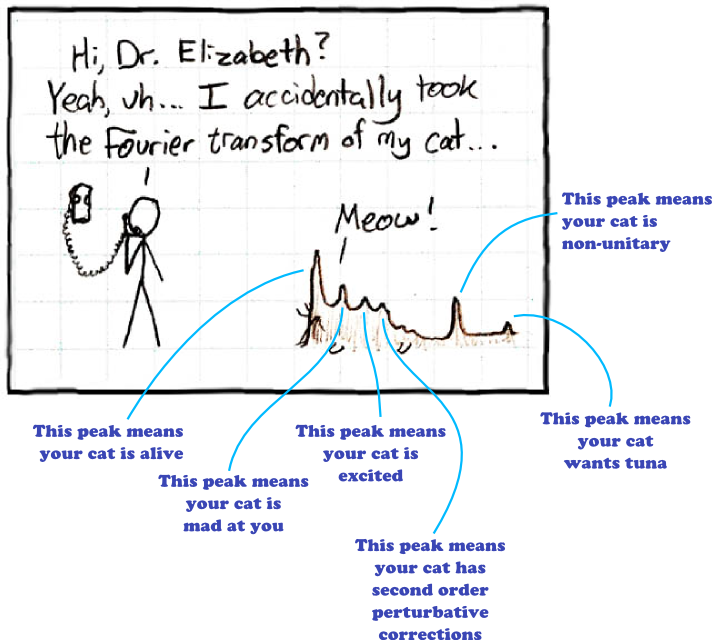Interpreting Fourier transforms
Posted by David Zaslavsky on
Before you ask: yes, I do know I’ve been absent from blogging for too long. About a month, actually, which roughly coincides with the start of the fall semester here at Penn State. I’m TAing a class this semester, and also working overtime to push out a paper about my group’s current research (a followup to this one, which I will be writing about soon), and still moderating Physics Stack Exchange, and many other things which just haven’t left time for blogging as much as I would have liked.
There are some recent nifty bits of physics I do plan to write about, but until I get time to do that, enjoy this picture:
(adapted from XKCD). I was inspired by last week’s physics colloquium speaker, Patrick Drew, who actually works on neural engineering. Not very physicsy, you’d think, but actually physics has ties to all sorts of other fields of study because in the end we’re all just trying to make models that describe reality.
